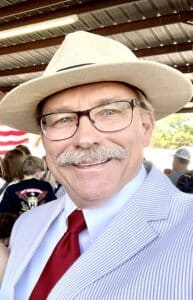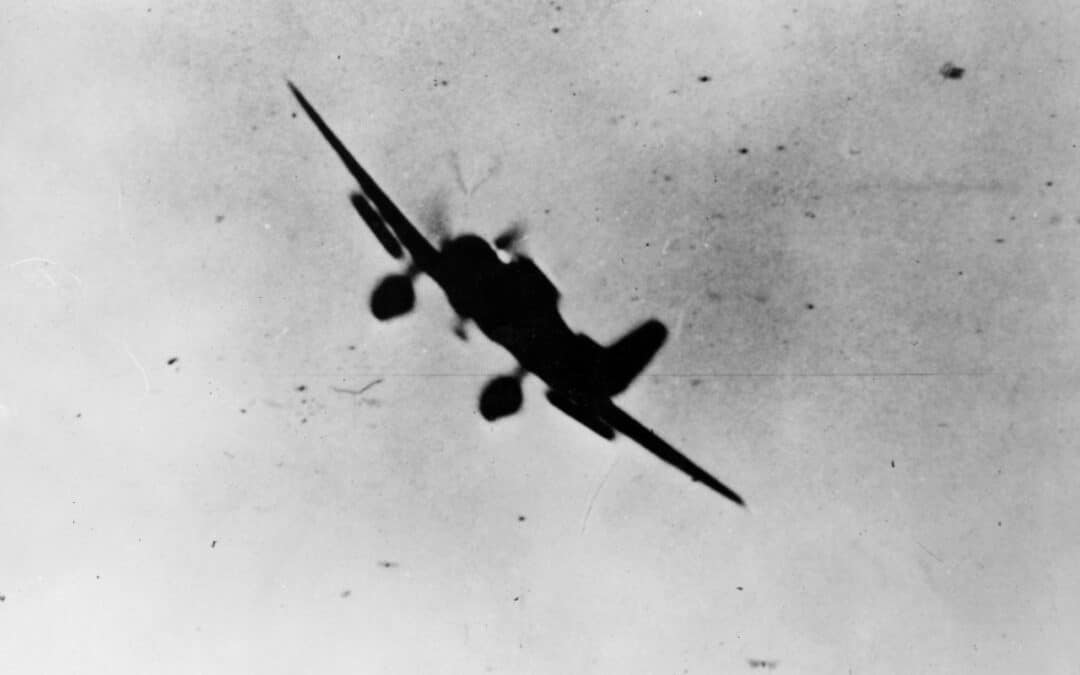Japanese Navy Type 99 Carrier Bomber (Val) in action during the Pearl Harbor attack.
December 7th, 1941, was a peaceful beautiful balmy Sunday morning at Pearl Harbor. Men had liberty, and many had been given passes to attend religious services off base. The USS War along with other men were manning and guarding the posts and ships and it looked like it would be a relaxing Sunday, except for the mini-submarine.
At Pearl Harbor there were 130 vessels of the US Navy’s Pacific Fleet. There were 96 were warships in total, with 8 battleships. Seven of those eight ships were lined up along what was known as Battleship Row. Because of their parking arrangement they were vulnerable to attack and an easy target for any enemy attacker. The battleships were: USS Pennsylvania (BB-38), USS Arizona (BB-39), USS Nevada (BB-36), USS Oklahoma (BB-37), USS Tennessee (BB-43), USS California (BB-44), USS Maryland (BB-46), USS West Virginia (BB-48).
The attack and destruction of Battleship Row at Pearl Harbor.
At 7:02 a.m., two radar operators spotted large groups of aircraft in flight toward the island from the north. That didn’t seem to be a problem as they were expecting a flight of B-17s from the United States mainland. They were told to sound no alarm. The Japanese would get a free pass on an air assault that came as a devastating surprise to the naval base.
Little did the Americans know, but that all six of Japan’s first-line aircraft carriers, Akagi, Kaga, Soryu, Hiryu, Shokaku and Zuikaku, were assigned to the mission of a surprise attack on the US Naval Fleet. The planes were launched—over 420 strong. These ships constituted by far the most powerful carrier task force ever assembled to date.
At Pearl all seemed perfect until 7:55 a.m. Hawaii time, when the first Japanese dive bomber wearing the symbol of the Rising Sun on its wings appeared out of the clouds above the island of Oahu. That’s when all hell broke loose.
In that single moment the Japanese Imperial Navy launched their surprise attack and struck a critical blow against the U.S. Pacific fleet. All Americans called it a “sucker punch”. This immediately drew the United States into World War II as a combatant.
That day saw 2,403 lives lost. Of those there were 2,008 sailors, 218 soldiers and airmen, and 109 Marines. There were also 68 civilians killed. Of the total 1,177 were killed on board the USS Arizona.
Japanese diplomats were meeting in Washington while Japan was gearing for war. Diplomatic negotiations had broken down and President Franklin D. Roosevelt and his advisers knew that an imminent Japanese attack was probable. Unfortunately, no added security measures were taken and no warnings were given to Admirals commanding US War ships. Thus, the men and ships at Pearl Harbor were sitting ducks.
The attack left much of the Pacific fleet was useless: Five of eight battleships, three destroyers, and seven other ships were sunk or severely damaged, and more than 200 aircraft were destroyed. A total of 2,403 Americans were killed and 1,178 were wounded, many while valiantly attempting to repulse the attack. It was a devastating day of war, yet the U.S. Sailors responded immediately and in many cases with extraordinary acts of bravery,. Many of their acts were unrecorded due to the deaths of so many witnesses. Even so, Navy personnel were awarded 15 Medals of Honor, 51 Navy Crosses, and four Navy-Marine Corps Medals, the most medals for bravery under fire for a one-day action is U.S. naval history.
What led up to the attack on Pearl Harbor?
The US only managed to destroy 30 Japanese planes, five midget submarines, and fewer than 100 men. Fortunately for the United States, all three Pacific fleet carriers were out at sea on training maneuvers. These giant aircraft carriers would have their revenge against Japan six months later at the Battle of Midway, reversing the tide against the previously invincible Japanese navy in a spectacular victory.
The day following the attack on Pearl Harbor, in a joint session of Congress President Roosevelt declared “Yesterday, December 7, 1941––a date which will live in infamy––the United States of America was suddenly and deliberately attacked by naval and air forces of the Empire of Japan.”
Following the speech Roosevelt asked Congress to approve a resolution recognizing a state of war existed between the United States and Japan. The US Senate voted to declare war against Japan by 82 to 0. The US House of Representatives approved the resolution by a vote of 388 to 1. The sole dissenter was Representative Jeannette Rankin of Montana, a devout pacifist who had also cast a dissenting vote against U.S. entrance into World War I. Three days later, the United States declared war against Germany and Italy following their declaration of war against the US.
The old WWII veterans are passing quickly from our view. Many are sad and disheartened by what they see in America today. Yet, there are a small number still among us hoping to meet a member of the rising generation who is a patriotic American. Greet these veterans and spend a couple minutes getting to know a soldier, sailor or marine who was in WWII. It will be time well spent and may cheer on one of the greatest generation who was ready to sacrifice all for love of country.
The surprise attack on America at Pearl Harbor was a horrific sucker punch that we were thankfully able to overcome through hard work, prayer, dedication, and more. We overcame because men hunkered down and worked hard to defend their—our—country. But that was then. Do we still have the caliber of young men who will fight to defend our nation today? Can our politically correct military stand against a hardened foe today? I hope so because we live in a time when our borders are being flooded by illegal invaders from around the world, and our internal lands are being overpopulated by those with a foreign tongue.
For more on Pearl Harbor read some of these articles from the past years:
Two years ago Michael Reed told the story of Pearl Harbor and some of the men who served there. You can read the article entitled Remembering Pear Harbor here.
Last year on the 80th anniversary of the surprise attack on Pearl Harbor and the men who were stationed there, The Standard writer Dean Allen wrote a blockbuster article about Pearl and how the United States of America is under attack today! Read it again here.
This year Navy veteran Shannon Cooper released his book in September 2022 about the men who served at Pearl Harbor. It’s entitled: Pearl Harbor: Remembering How We Served and Survived December 7th, 1941.





 RSS - Posts
RSS - Posts